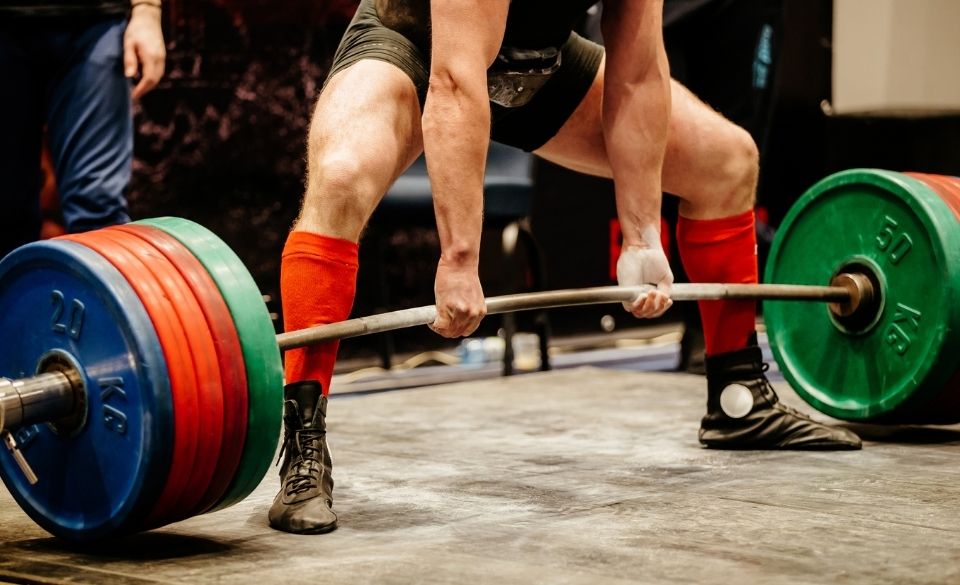
What Is A PR In Lifting & The Gym Mean? We Answer All
Page Contents
For many people, going to the gym is a hobby and a way to stay healthy. For others, it could mean bulking up, increasing strength, or even competing as a powerlifter or bodybuilder.
Either way, keeping track of your progress and training sessions is highly important. Doing so, allows you to make changes to your training based on results, and also helps you track your fitness.
When following a training program, it is normal to do regular tests to make sure you are making improvements. This is also a great way to update your PR across many different exercises.
In this article, we discuss everything to do with a PR (Personal Record) including:
– What is a PR in lifting?
– What does PR in the gym mean?
– Why is it important to hit new PRs?
– How to keep track of your PRs when lifting?
– Other commonly used acronyms in the gym
There are a lot of terms used in gyms, and these can be quite difficult to understand. However, this article should give you some insight into what PR means.

What Does PR Mean In The Gym?
PR is an acronym used when a personal record is set. In the gym, this means beating a previous best result. This could be:
-Lifting the most weight you have lifted during a one-rep max effort.
-Performing more repetitions than you have ever done at a certain weight.
-Running a faster 3km time than you have done before on the treadmill, would also be classed as a PR in the gym.
Generally, the acronym PR ( personal record) is used when someone beats their previous best weight in a compound exercise. Such as the bench press, deadlift, or squat.
It can also be used when you exceed the maximum number of repetitions you have done with a certain weight before.
Below are some examples of PRs in the gym:
-Your previous bench press is 150kg for one rep. If you manage to surpass this weight, it is classed as a personal record.
-You managed to run a faster 3km time than you have done before on the treadmill.
-You have completed 10km of rowing faster than you have completed the distance before.
As you can see, beating any previous best times and weights is naturally classed as a PR (Personal Best).
What Is A PR In Lifting?
Just like PRs in the gym, a PR in lifting is generally the same. However, PR in lifting means your personal record is only set when lifting weights.
Some examples of PRs in lifting include:
If you had lifted 200kg during a deadlift as you pervious best. Lifting more than this would be also classed as a personal record
If you have bench pressed 100kg for 4 repetitions, and now managed to do 6 repetitions at the same weight, this would also be classed as a personal record.
Your previous best lift during a squat was 80kg and you now completed a one rep max of 100kg. This would also be classed as a PR in lifting.
Why It’s Important To Hit New PRs?
There are many reasons why it is important to hit new PRs at the gym and when lifting. The main reasons include motivation, progression, and adjustment of your training plan.
When it comes to making progress with your training, motivation is one of the most important factors. Setting regular PRs can help motivate you to push harder, train smarter and confirm that you are on the right track with your training.
Even if you don’t compete, setting new personal bests in your lifting and training can help boost your confidence and make you enjoy the process much more.
Remember a personal record is not just about lifting as much as you can. It can also set new personal records by performing more reps, and even completing an exercise you have never done before.
Think of a personal record as a reward for your hard work. It is proof that all the hard work is paying off. If you find you are not consistently producing PRs in your training, it gives you good reason to go back to the drawing board, and find out why this isn’t happening.
Remember, it is unrealistic to seek new PRs every training session, but you should at least see your progress improve each month.

How To Keep Track Of Your PRs When Lifting?
To know what PRs you have set, it is important to keep track of your workouts and personal records.
Luckily, there are many phone apps for doing so, as well as other tools like Microsoft excel. However, if you are old school, a training diary can work just as well.
For the more experienced athlete, online training software can also help keep better track of your personal records when lifting. Tools like Training Peaks, Gymahloic, and Fitbod can all help track your gym workouts and help you keep a database of your PRs in the gym. Not only that, but they can also help you to improve your training, track your rest, and help improve your technique through how-to videos.
Remember, tracking your workouts is important if you want to continue to improve your lifting and fitness.
PR & 1RM – What Are They?
If your goal is to set new PRs in lifting, there are some acronyms you need to know. These are PR & 1RM.
1RM stands for one-repetition maximum and PR which we have already discussed means personal record. So what is the difference between PR vs 1RM?
1RM is generally classed as your one-weight repetition at this moment. For example, if you benched 200kg for one rep today, it wouldn’t be classed as a personal record, if you had already lifted 205kg a year ago.
Other Acronyms Used In The Gym
If you are new to the gym, you would have heard multiple other specific terms you haven’t heard before. However, don’t let that bother you, as with time you will start to learn what they mean. To get you started we explain a few of the basics here.
AMRAP – AMRAP stands for “as many reps as possible”. This involves doing as many repetitions of a lift as you can.
RPE – RPE stands for “Rate Of Perceived Exertion”. This allows you to set the difficulty of a workout based on a 1 to 10 scale. With 10 being to complete failure.
ROM – ROM is an acronym for “range of motion”. This stands for the distance the weight has travelled through each repetition.
Other acronyms used in the gym include:
HIIT – HIIT is short for High-intensity interval training.
LIT – Short for Low Impact Training
DOMS – Delayed Onset Muscle Soreness
EMOM – Every Minute on the Minute.
EPOC – Excess Post-exercise Oxygen Consumption
ROM – Range of Motion



